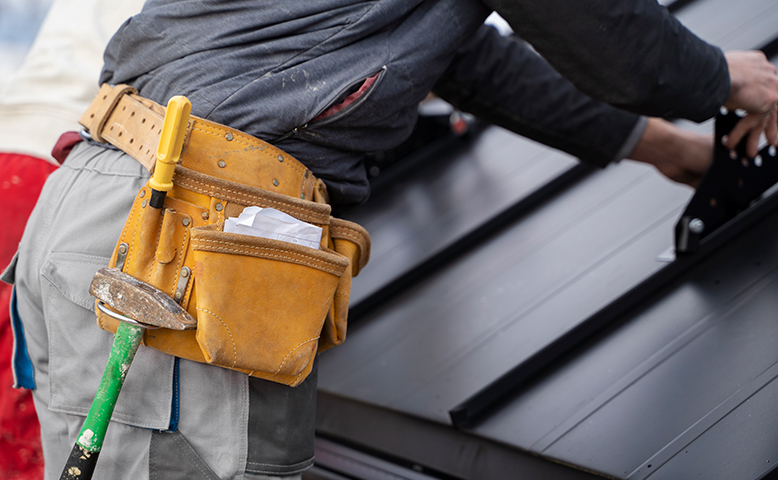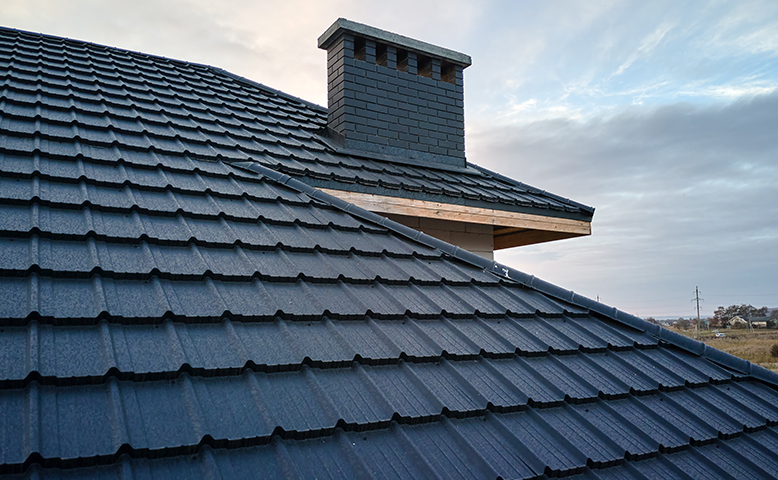A metal roof is often praised for its muscle, yet even steel grows tired after years of wind-whip and temperature swings. When the next thunderhead rolls across the horizon, you want to be certain your panels, fasteners, and flashing can ride it out. But roofs rarely fail all at once. They whisper first, sending subtle clues you can spot from the ground or attic hatch. By learning those clues now, you sidestep soaked ceilings later. This blog walks through ten warning signs your metal roof may not survive another storm. Every section explains what to look for, why it happens, and how quick repairs can extend service life without taking a chunk from your wallet. Grab a notepad and start checking.
Visible Rust And Flaking Metal Surface Panels
Orange speckles on a roof panel might seem cosmetic, yet they shout one clear message: the protective coating has worn away. Galvanized and Galvalume sheets depend on zinc or aluminum layers to shield raw steel from oxygen. When hail, falling branches, or chemical pollutants scratch that layer, moisture attacks the exposed spots. Surface oxidation then expands beneath adjoining paint, causing it to bubble and flake. Left alone, pits deepen, thinning the panel until wind can tear it like foil. Inspect south-facing slopes first; their constant sun accelerates coating fatigue. If rust occupies more than ten percent of a panel, replacement is wiser than touch-up. A magnet is handy—light drag marks will pick up red dust, confirming hidden corrosion you cannot see from the lawn.
Fasteners Backing Out Around Panel Seams
Metal expands during hot afternoons and shrinks after sunset. Self-tapping screws and washers flex with that motion, but years of daily stretch loosen threads. When you notice shiny screw heads sitting proud of the panel, seams are already losing grip. Water sneaks through those lifted washers, tracking along purlins before dripping inside. A quick fix is to install oversized fasteners with new neoprene washers, yet that only helps if the underlying wood remains solid. During your check, wiggle a suspicious screw with a gloved finger; any wobble means the hole has widened. Count how many you find in a 10-foot span. If more than five are loose, the panel needs re-seating or full replacement to prevent wind-driven rain from prying it further.
Sealant Lines Cracked Or Missing Entirely Along
Factory-formed laps often receive a two-inch bead of butyl tape. Over time, ultraviolet rays and freeze-thaw cycles shrink that rubber, leaving hairline gaps. Once the tape dries out, it loses stickiness, and heavy gusts can blow rain sideways beneath the hem. Run a plastic putty knife along the lap joints; if the sealant crumbles like stale bread, it is no longer weatherproof. Also inspect penetration boots around vents and skylights. Most boots fuse EPDM rubber to metal rings, yet ozone breaks down the rubber, causing mushroom-shaped splits. Missing sealant here creates direct paths for water to sneak inside insulation layers, where it condenses and breeds mold. Replacing old tape with high-grade butyl costs little and restores proper compression when panels flex during storms.
Loose Or Rattling Ridge Cap Sections During
A ridge cap ties the two highest panels together while allowing attic air to escape. When cap screws loosen or the closure foam beneath them shrinks, wind slips under the edge and lifts the cap rhythmically—often heard indoors as a fluttering buzz. That movement worsens each time a gust pulls upward, eventually snapping the cap flange or shearing screws. Look for broken closure strips scattered in gutters; these grey foam crumbs are telltale signs. Stand in your attic on a clear day and watch for daylight peeking through ridge gaps. If you can see the sky, it can rain. Re-fastening the cap with stitch-screws and installing new closure foam restores continuous pressure, minus the noise.
Dents From Hail Creating Tiny Drain Pools
Small craters from last summer’s hail may seem harmless, yet they flatten the roof’s slope in micro-zones where rainwater lingers. Standing water corrodes coating faster and leaches protective alloying metals. Use a straightedge held across the dent; a depression deeper than 1/16-inch can retain moisture for hours. Couple that with airborne dust, and you have the perfect environment for corrosion cells to form. Watch for:
- Grey rings outlining dents—an early sign of coating breakdown
- Fine cracks radiating from impact centers, allowing capillary leaks
- Paint chips are collecting in gutters, proving that the impacts were forceful
Panels sporting clusters of such dents are best swapped out because filling each crater risks trapping more water under the patching compound.
Discolored Spots Hinting At Galvanic Corrosion
When two dissimilar metals touch and rainwater provides an electrolyte, a battery effect forms. Copper wires from HVAC units, steel brackets, or even aluminum antenna feet can spark galvanic action against the roof panel. Look for chalk-white or blue-green halos around contact points; these stains mark metal ions migrating away from the panel. Galvanic corrosion often tunnels beneath paint, making the area feel soft when pressed with a screwdriver handle. Isolate mixed-metal contacts with butyl pads or replace hardware with compatible stainless options. Ignoring these chemical reactions invites pinholes that burst open under storm pressure.
Interior Drips After Light Spring Showers Small
If minor showers leave small brown circles on the ceiling drywall, your roof has already lost its first defense. Spring rain is often wind-blown, testing every seam. Trace stains back to their attic origin; wet insulation feels heavier and darker than dry batts. Use a moisture meter: readings above 15 percent indicate a chronic leak. Check nearby rafters for black stripes—signs that fungus has started digesting cellulose. Even if the metal skin looks sound outside, hidden fastener leaks can siphon water along vapor barriers until it finds a lighting box to drip through. Early repairs spare you the cost of replacing attic insulation and ceiling panels later.
Insulation Dampness And Hidden Purlin Sagging Clues
A wet blanket of insulation does more than lower R-values; it burdens purlins with extra weight. Over seasons, moisture-laden batting presses on metal supports, causing subtle sag between trusses. Place a long level across interior purlins; a dip over 1/4-inch across four feet signals trouble. A couple sag with audible creaks when walking on the roof, and you have structural stress that a hard gust could exploit. Spot these red flags early:
- Sweating vapor barrier even on mild days
- Dark lines forming along the underside of purlins
- Hairline cracks in the ceiling joints below the sagging sections
Replacing soaked insulation and sistering extra purlins restores stiffness before panels buckle or detach during the next wind event.
Conclusion
Storm season does not wait—your roof must be ready every day. If any of the signs above match what you see at home, prompt action keeps a simple repair from growing into ceiling damage and costly interior fixes. The crew at Kingdom Contractors LLC specializes in metal roof repair and panel replacement, using proven methods that seal gaps, secure fasteners, and restore protective coatings for lasting strength. Call today for a no-obligation inspection and keep tomorrow’s storm outside where it belongs.

